Our Blog - Bretagne Trip - Summer 2021 - Carnac Stones
The Carnac stones are an exceptionally large collection of up-right standing stones, consisting of stone alignments (rows), dolmens (stone tombs), tumuli (burial mounds), and single menhirs (standing stones). More than 3,000 prehistoric standing stones were carved out of local granite and erected by the pre-Celtic people in this area. They are the largest collection of these types of stones in the world. The stones were erected at some stage during the Neolithic period, probably around 3300 BC, but some may date to as early as 4500 BC. Obviously, there is no written history that can tell us what these are for or why they are here in straight lines. There are obviously various myths from 1st century AD Roman and later Christian occupations in the area. One Christian myth associated with the stones is that the stones were pagan soldiers in pursuit of Pope Cornelius when he turned them to stone. The local folklore claims that the reason they stand in such perfectly straight lines is that they are a Roman legion turned to stone by Merlin.
The area that we went through with the tour is called the Ménec alignments. This area has 11 rows of standing stones that cover an area almost 4,000 feet long and just over 300 feet wide. At both ends, there are thought to be remains of stone circles, similar to the circle at Stonehenge. The largest stones are about 13 feet high. Some pictures of the stones as well as some with Tom to give an idea of the size.

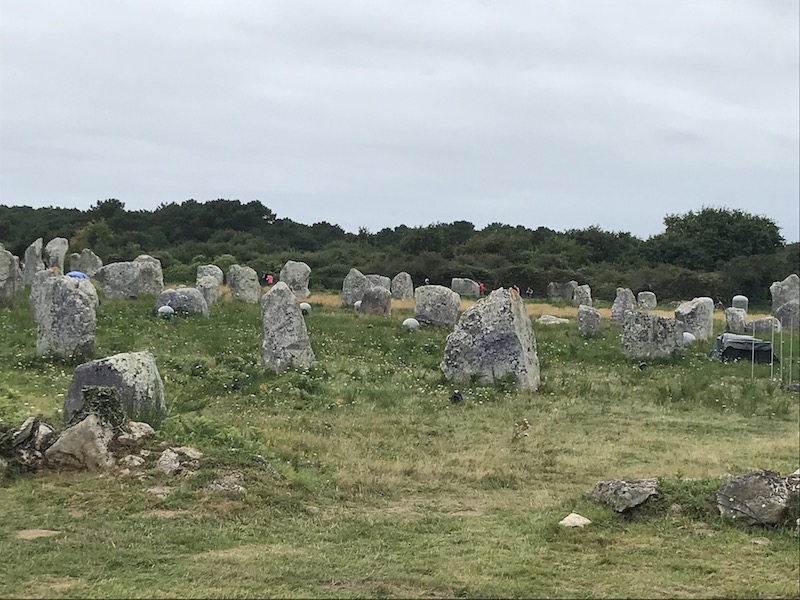

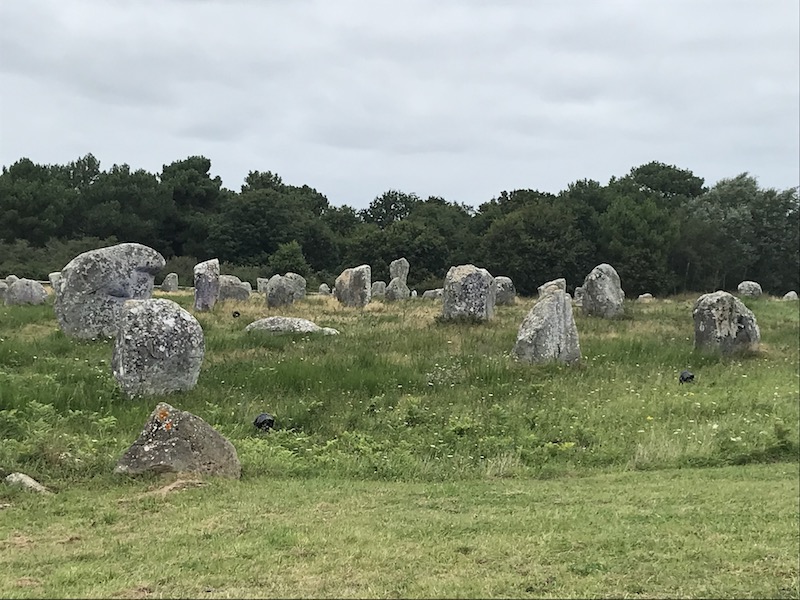

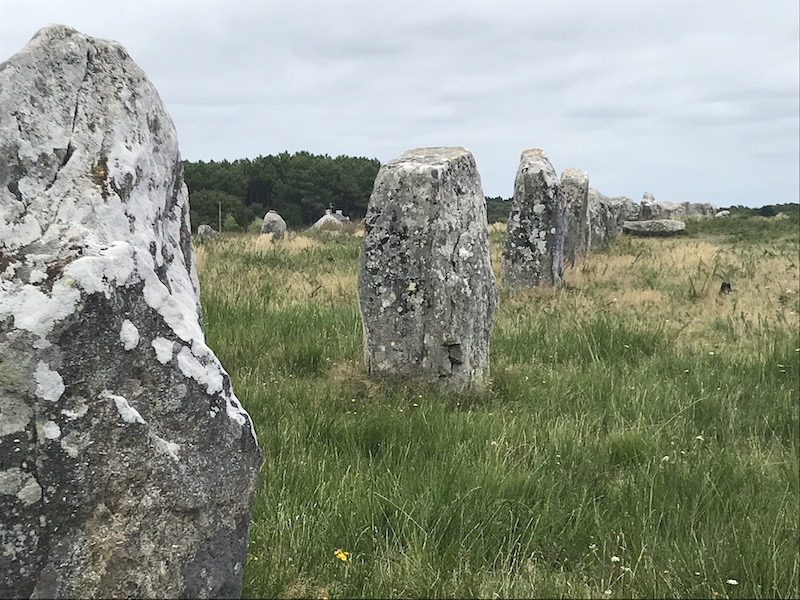

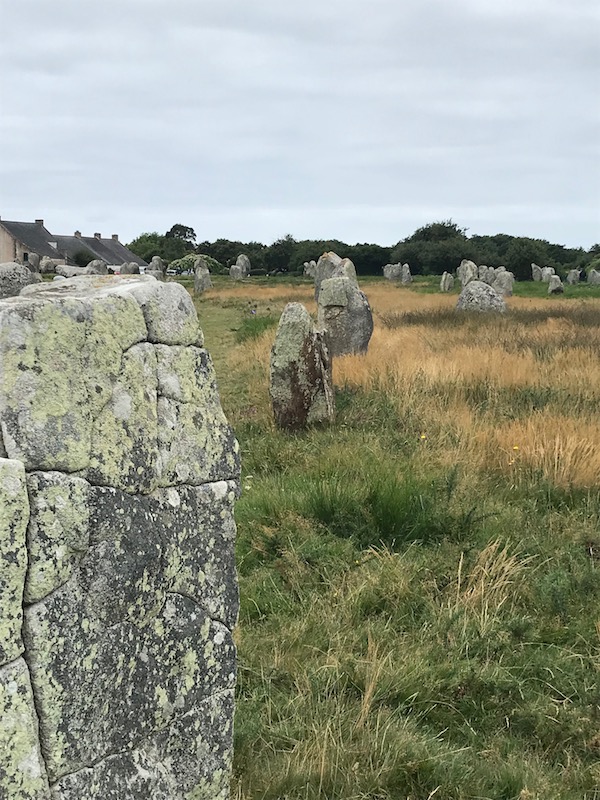
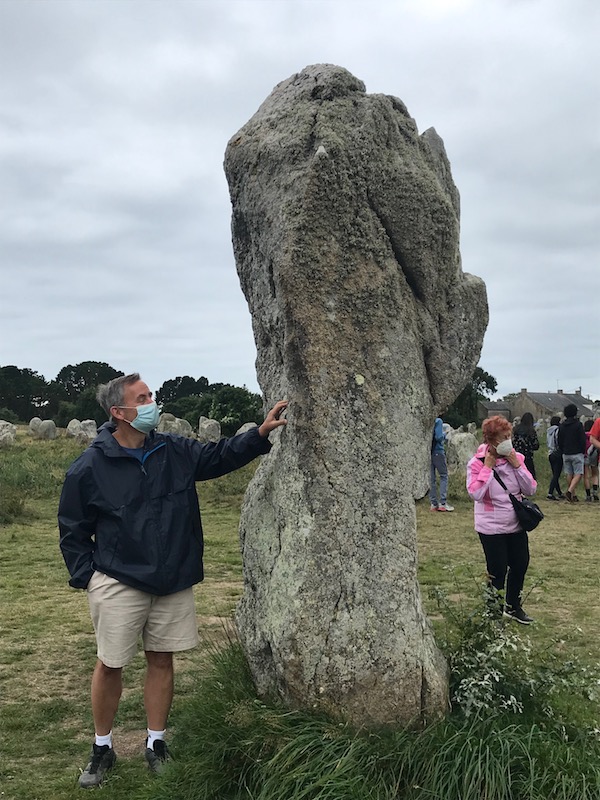

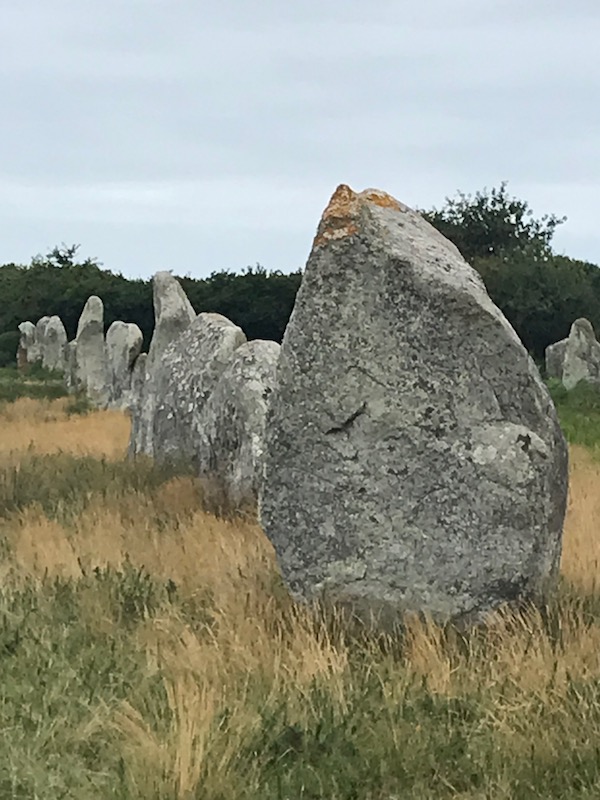



In fact, once you have seen them up-close, it is nice to actually look at the pictures taken from above on various websites (like Wikipedia) to really get a good overall picture. Here is an example:
.